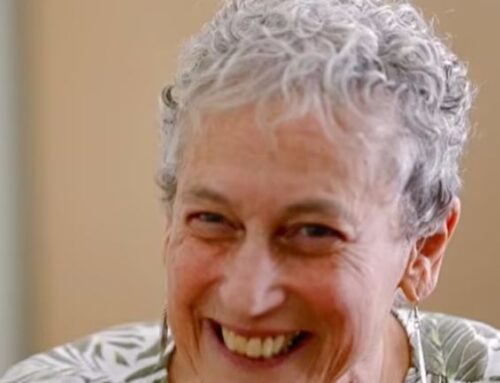Alex Schadenberg, executive director of the Euthanasia Prevention Coalition, attended the World Federation of Right to Die Societies biennial conference in Toronto and learned a lot about its strategies to bring about euthanasia and physician-assisted suicide.
This article is a shortened version of the full report that is available directly from the Euthanasia Prevention Coalition.
The World Federation of Right to Die Societies 16th Biennial Conference was held Sept. 7-10 in Toronto. I attended the three-day conference to observe, take notes and learn the thoughts and strategies of the euthanasia/assisted suicide movement. I have always thought that it is important to understand the strategies of the opposition in order have an effective strategy of our own.
The conference was split into three sections. There was a pre-conference session on Sept. 7, organized by Compassion & Choices, an American group from Oregon. The main conference was on Sept. 8 and 9, hosted by Dying With Dignity, Canada’s largest advocacy and educational group for the legalization of assisted suicide. The third section of the conference was the NuTech meeting on Sept. 10. NuTech is an international organization that exists to develop suicide techniques.
The first major talk, “The March of the Religious Right – Where Does it Lead?” featured Robert Rabin, a former assistant U.S. attorney-general, a very impressive speaker, and Jon Eisenberg, an attorney and author of the book Using Terri who seemed to be a radical idealogue. Rabin is a political organizer and adviser, who offered insight into the strategy of the Right to Die movement. He explained how the Right to Die movement was attempting to convince politicians that its position was politically positive. Rabin is convinced that their message must be: “Who decides?” He is convinced that the “who decides” theme will resonate with enough people to bring them victory. Rabin also believes that referendum campaigns are unwise, because the right to die movement lacks the financial resources to win.
Eisenberg thought they needed to identify religious leaders who supported euthanasia. He said that Fr. Kevin O’Rourke, a Catholic priest, provided him with the arguments he used to defend the Schiavo case.
Compassion & Choices Client Support Program
Helen Beum facilitated the session concerning the Compassion & Choices – Client Support Program, featuring four volunteers who gave their accounts of experiences in the client support program.
The program has 130 volunteers spanning 27 states in the U.S. It received 2,500 calls last year. Many people believe that the Client Support Program only offers information to people who are seeking “choices” at the end of life. The reality is that it is an assisted suicide program training volunteers to journey with and at times assist clients to commit suicide.
Sam Fogal, a volunteer, explained how he was passionate about hastening death. He was a minister for 40 years and witnessed many people suffer while dying. He had been involved with his first hastened death a few weeks previous and felt that it was the “right thing to do.”
Judy Schneiderman, a volunteer from Cincinnati, said she retired from a career in medical sales and believes that the cost for medical technology is often a waste of money. She became a volunteer because she wants to hasten her own death and thought that her involvement was a safety net in case her suffering was unbearable.
Dr. Tom Preston has a long history of advocating for assisted suicide. He is not only a Client Support Program volunteer, but acts as a medical consultant. He was at the first hastened death for Compassionate Dying, a forerunner to Compassion & Choices. Preston stated that after several hastened deaths, he has come to understand the value of a planned death. He thought the hardest death is a sudden death, while a planned death provides the opportunity to say goodbye to loved ones.
The session was wrapped up by explaining that every volunteer undertakes a three-day training seminar and must be part of the team meetings.
Toward an iron-clad plan for dementia
Dr. Stanley Terman is concerned that there is a growing number of Americans who are needing care due to dementia or Alzheimer’s. He believes the cost of this care is simply going to become to excessive. He says family members will refuse to allow patients to die by dehydration, since many people do not have a power of attorney document that will insure they will be dehydrated to death when in a state of dementia. To solve this “problem,” Terman has written the book The Best Way to Say Goodbye, which explains how to ensure that you will be dehydrated to death if experiencing dementia.
Terman also started a group called Caring Advocates. This organization is developing “Trusting Circles” comprised of people who will act as a power of attorney. He stated that if you wish ensure you will have food and fluids withdrawn, then you need to read his book.
Unifying messages in a polarized world
Steve Hopcraft was the political organizer for the recent California campaign to legalize assisted suicide. He explained the results of the polling data from the California campaign and is convinced that even though they failed to get the bill passed into law, in fact they were so successful it is inevitable they will pass a law.
The California campaign had hired David Binder to conduct focus groups to learn how to frame the questions for the general public. They found that they must ban the words “suicide” and “assisted suicide,” which have negative connotations. When they used terms such as “aid in dying” or “end of life choices,” they gained 15 per cent support in polling.
They unsuccessfully attempted to get the media to change their language. They are now attempting to change the language before their next campaign. They will frame the next debate on the themes of patients’ rights, senior citizens’ issues and the right to choose.
Hopcraft said that nothing trumps individual stories. People always respond to personal stories.
Schiavo’s lawyer
George Felos, lawyer for Michael Schiavo, who defended the killing of Terri Schiavo, was also there. In his presentation, he said “spiritual leaders are simply ideologues who manipulate truth for a purpose.” He said the Schiavo case was hijacked by the pro-life movement and the religious right as part of their “war” for the right to life, part of an agenda to overturn Roe vs Wade.
Responding to a question, Felos said Canada was a far more progressive nation than the United States and that it is possible Canada could become a safe haven for the right to die movement.
Life and death decisions
Roland Halpern is the director of community relations for Compassion & Choices and unsuccessfully lobbied to get the Hawaii Death with Dignity Act passed in 2002. He emphasized the need for a change in language. The terms “assisted suicide” and “hastened death” are negative, whereas “aid in dying” and “end-of-life choices” are positive. Halpern broke down polling data to show that the more people are educated, the more likely they are to support assisted suicide.
He suggested people need to use the method of deliberation that has been developed by the National Issues Forums (http://www.nifi.org) to effectively educate and break down barriers to assisted suicide. Deliberation is a style of reasoning that finds the common ground and possible agreement.
The purpose of deliberation is to change how people view the question. The advantage to using the National Issues Forums program on Life and Death Decisions is that it creates credibility and opens the door to schools, community groups, seniors’ groups and churches in the target demographic. The Life and Death Decisions program establishes three positions concerning death and dying. It explains the strengths and weaknesses of each position and some common ground is sought. The end result is that people who oppose assisted suicide remain opposed, those who support assisted suicide continue to support it, but the middle ground, representing the majority of people, move toward a view of supporting assisted suicide.
British speakers
Joffe doesn’t like the term “euthanasia,” because it has terrible connotations, including eugenics or killing the mentally ill. He prefers the term “assisted dying.” His first bill in the British House of Lords was presented in 2003, but didn’t pass. His second bill in 2005 was based on an Oregon model.
Deborah Annetts, the executive director of Dying in Dignity in the U.K., explained their campaign to support the Joffe bill. She said that first, they received training from Compassion & Choices in Oregon. The first goal was to build their support base, so they compiled a database of 100,000 people, 10,000 e-mail contacts, 300 terminally ill campaigners and 50 sympathetic media contacts throughout the U.K. Dying in Dignity worked hard to convince the British Medical Association to take a neutral position on the issues. This was achieved in 2005, but reversed in 2006. Annetts claimed their opposition adopted American-style tactics by hiring professional media and by working with Wesley Smith.
She said they are creating cultural change through the media. There are two soap operas currently featuring stories on assisted suicide. Both stories were written with the help of Dying in Dignity.
Nudging the law
Robert Rivas, a lawyer in Florida who attempted to legalize assisted suicide in Florida through the courts, believes that assisted suicide will only be legalized through plebiscites. He thought the movement needs to preserve its gains, change the minds of people at the grassroots and support initiative (plebiscite) drives.
Dr. Richard MacDonald is a past president of the World Federation of Right to Die Societies (2000-2002) and the past medical director for the Hemlock Society. He said he is getting tired of nudging the law and thinks it is time to “kick the law in the ass.” He said there have been no major successes since Oregon. He complained that very few people use the law in Oregon, the Netherlands or Belgium and felt that major gains would not be won for at least 50 years. He said more people commit tragic suicide in Oregon than use the assisted suicide law. He hoped Canada might move ahead and become a safe haven for euthanasia and assisted suicide. He thought the law would change when enough people begin breaking it.
Jocelyn Downie, a professor of law and medicine at Dalhousie University in Halifax, believes that the law will eventually change, but in the meantime, the guidelines that prosecutors follow in Canada could be changed. If prosecutors are convinced not to lay charges, then the law becomes ineffective. She also urged the use of jury nullification. In Canada, if a jury refuses to convict because they think the law is wrong, then the person is not guilty. This works even when the evidence for conviction is overwhelming.
Downie says the law can be challenged in the courts based on the Charter of Rights and Freedoms. She said it has been more than 10 years since the Rodriguez case and only one Supreme Court justice remains from that time.
Lesley Martin is an activist from New Zealand who killed her ailing mother by smothering her with a pillow. Martin is an optimist and believes that by intentionally breaking the law and using the media and the arts, they will change the law.
Dr. Michael Irwin is the former UN medical director for UNICEF and a past chairman of the Voluntary Euthanasia Society in the U.K. He actively encourages people in the U.K. to travel to Switzerland for assisted suicide. At least 50 people from the U.K. have travelled to the Dignitas death clinic in Switzerland.
The new censorship
Dr. Philip Nitschke from Australia, the “peaceful pill activist,” debated Dr. Rodney Syme from Australia concerning the law in Australia that outlaws internet sites promoting suicide.
Nitschke explained that the law outlawing suicide promotion and counselling was not only censorship, but was specifically designed to stop him. Nitschke had operated an internet site and e-mail suicide counselling for several years. He pointed out that on March 27, 2006, a bill was proposed in the German legislature that was similar to the Australian law. Nitschke warned that laws banning internet and e-mail suicide promotion are a major set-back for right to die groups.
Dr. Rodney Syme believes that the Australian law goes too far, but some restrictions on suicide information are necessary. He believes it is irresponsible to promote suicide and provide instructions for suicide on the internet or by e-mail.
Hospice/palliative care
Arthur Schaefer, the director of the Centre for Professional and Applied Ethics in Winnipeg, said he thought hospice/palliative care and assisted suicide belong together. He thought assisted suicide and allowing and withdrawing treatment at the end of life are ethically the same. Even though Schaefer believes that the slippery slope is a false argument, he stated the provisions in the Oregon law were inadequate and needed to be widened for greater use.
Conclusion
It is important to know the views of the other side, not only to engage them in argument, but to develop a co-ordinated strategy with the leaders of groups opposed to the legalization of euthanasia and assisted suicide.
Alex Schadenberg is executive director of the Euthanasia Prevention Coalition. A full report of the conference is available from the EPC. You can order the full report by calling 1-877-439-3348 or e-mailing info@epcc.ca.




